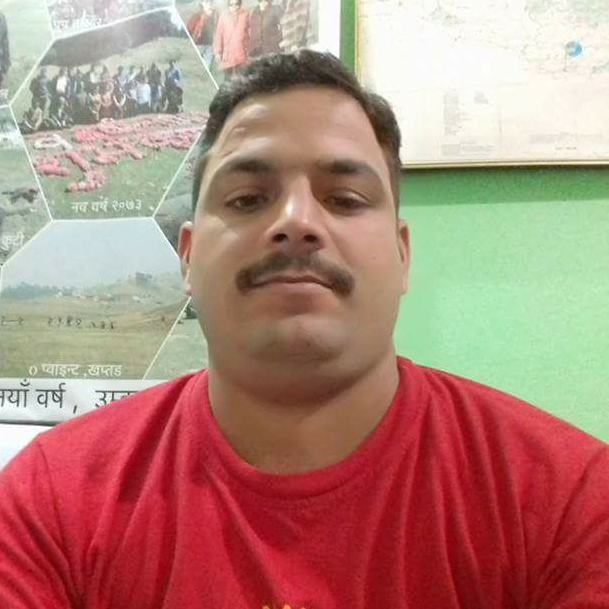Sudurpaschim Province
Testing of third phase of Mahakali irrigation canal begins
The Stage III of the project, which would irrigate around 33,520 hectares of land in farwestern Nepal, has been completed after 26 years..jpg&w=900&height=601)
Bhawani Bhatta
Nepali farmers will be getting their share of water from the third phase of the Mahakali Irrigation Project, after nearly 26 years of the signing of the Mahakali Treaty in 1996.
The testing of the irrigation canal began on Monday.
The Mahakali Irrigation Project Stage III would irrigate around 33,520 hectares of land. The water source for this project is the Mahakali River, which originates in the Himalayas, having a minimum flow of about 130 cubic metre per second.
The command area covers four areas in two districts, Kanchanpur and Kailali—western (Dodhara-Chandani), northern (Bramhadev), and central and southeastern (Tribhuvanbasti) part of Kanchanpur district and northwestern (Malakheti) part of Kailali district in farwestern Nepal.
India tested the canal on its side from Tanakpur barrage in the first phase.
On the first day, technicians tested the canal by releasing water upto a metre.
According to project officials, water would be released into the canal on the Nepali side after carrying out similar tests for two to three days.
Gopal Singh Bista, general manager of the National Hydroelectric Power Corporation in India, started the canal testing by releasing water.
According to technicians, the canal on the Nepali side has been blocked to store water for testing.
“Water will be released in the canal on the Nepal side within a few days,” said Rana Bahadur Bam, director of the Stage III Mahakali Irrigation Project.
The Mahakali Irrigation Project is located in Kanchanpur district, in farwestern Nepal. It gets its water supply from the Mahakali River through the Sharada Barrage, which was constructed in 1928 by the British-Indian government.
By 1975, the main canal and some major secondary were completed but not more than 3,400 hectares of land could be irrigated.
In 1976, the Mahakali Irrigation Project was identified by the International Development Association. The Development Credit Agreement for the Mahakali Irrigation Project Stage I was signed on September 29, 1980.
The project had a five-year implementation period, with a completion date of June 30, 1985. The Stage I project was completed in 1988.
The financing agreement for Stage II of the Mahakali Irrigation Project between Nepal and the International Development Association was signed and made effective on November 18, 1988. Stage II was completed in June 1997.
Stage III has been completed after 26 years. With the completion, water will now be supplied to Nepal from the Tanakpur barrage.
.jpg)
The canal construction process did not begin for a long time even after the signing of the treaty. Nepal initiated the construction of the canal in 2006-7 while the Indian authorities completed the construction of a 1,200-metre-long canal on the Indian side this year.
Stage III, currently a national pride project, was proposed for development under the purview of a new Nepal-India treaty called “Treaty for Integrated Development of Mahakali Barrage including Sharada Barrage, Tanakpur Barrage and Pancheshwar Multi-purpose Project,” signed on February 12, 1996.
As per the provisions of the treaty, Nepal is entitled to draw 28.35 cubic metre per second [cumec] of water from the Sharada Barrage during the wet season [from May 15 to October 15] and 4.25 cumec of water during the dry season [from October 16 to May 14].
Nepali authorities are preparing to transplant paddy in the Bagun area of Bedakot Municipality in Kanchanpur district using the water from the new facility on June 29, which is celebrated as “Paddy Day”.
“India is testing the irrigation canal that lies in India. The canal is being filled and cleared after which some water will be released on the Nepali side on Wednesday,” said Bam.
The construction of a 28.5-km section of the 151-km long canal, which began in 2006-07, has been completed so far.
Bam informed that 10 cumec of water will be released every day after the completion of testing of the completed portion of the main canal on the Nepal side.
Currently, construction work on an additional 10-km canal is underway. The construction work started gaining momentum after the project was listed on the list of national pride projects two years ago.
Bam said that the water from the constructed part of the main canal will be released into the Musepani and Syali rivers as the construction of the branch canals is yet to be completed.
He also added that the land acquisition and design plans for the construction of 22 branch canals are in the final stages. The government has also allocated a budget for the current fiscal year to construct the branch canals along with the main canal.
Around 5,300 hectares of farmlands will benefit from irrigation after the construction of the 22 branch canals.
According to project officials, the construction of a canal in Dodhara Chandani will begin this year as a part of the third phase of the canal construction. A survey for the construction was conducted last year and the land acquisition process will begin shortly, they said.
A 16-km main canal will be constructed in Dhodhara Chandani which will facilitate the irrigation of 3,500 hectares of farmland. The water from the Sharada canal in India will be released into the main canal in Dodhara Chandani.
The 1,200-metre section of the main canal at Dodhara Chandani which will be constructed along the Nepal-India border will be built by India.
Project officials said Nepal must begin canal construction on the Nepali side so as to put pressure on India to begin the construction work on their side.
At Brahmadev, India initiated the construction work 13 years after Nepal began the construction of the canal.




 5.27°C Kathmandu
5.27°C Kathmandu













